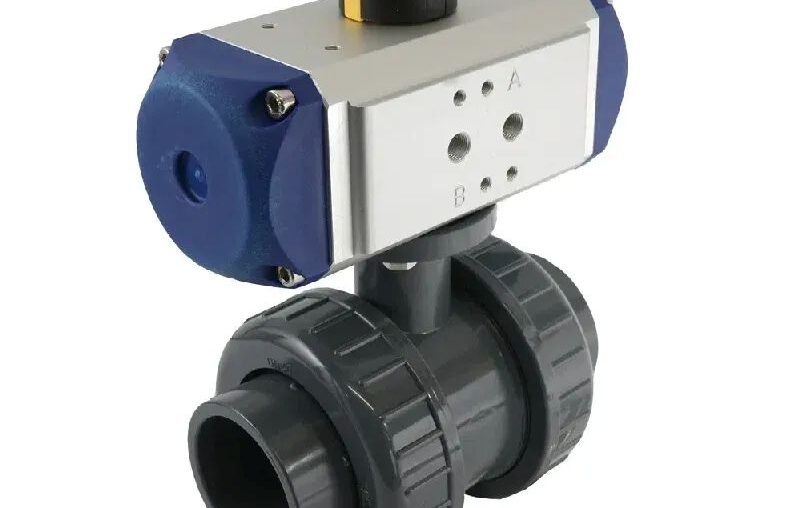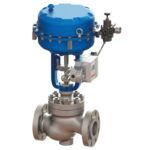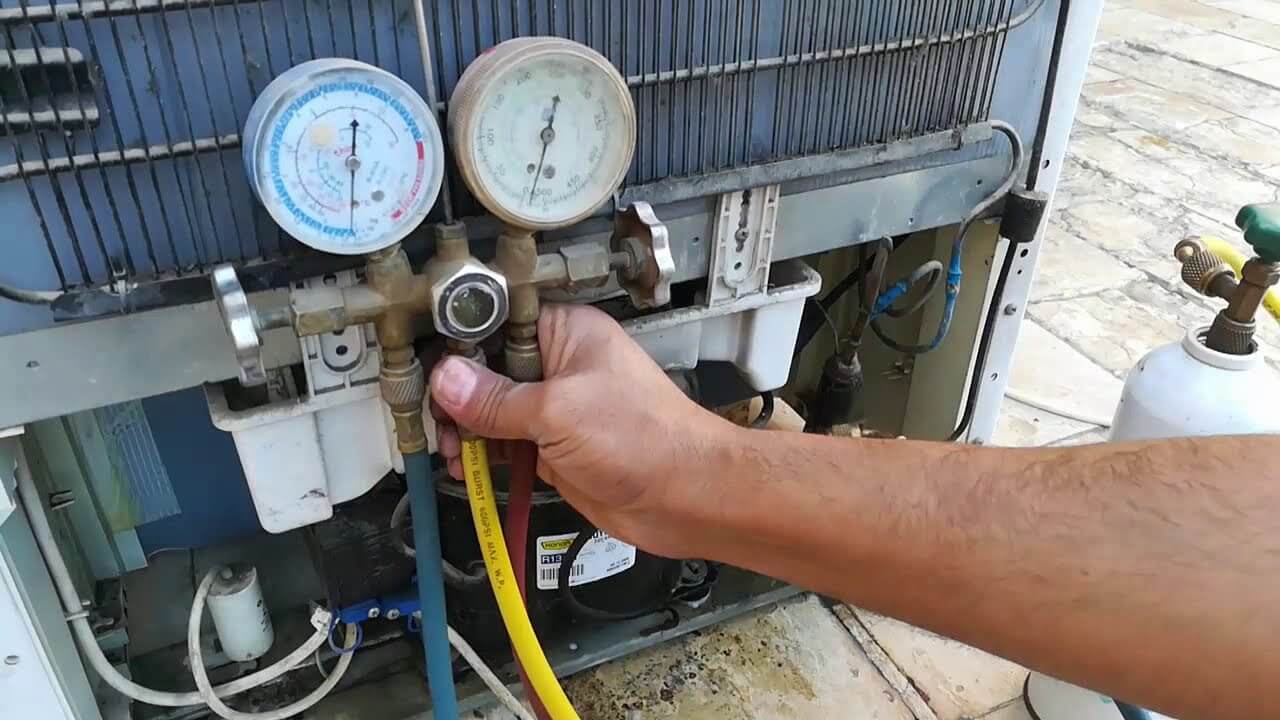Pneumatic ball control valves play a crucial role in industrial fluid systems, offering precision, reliability, and automation. These valves are actuated using compressed air or gas, making them ideal for applications that demand fast response times, energy efficiency, and long-term durability. As industries continue to pursue smarter and more efficient process control technologies, pneumatic ball valves remain a preferred choice for engineers and system designers worldwide.
What Is a Pneumatic Ball Control Valve?
A pneumatic ball control valve is an automatic shutoff valve that uses a spherical ball to control the flow of fluids or gases in a pipeline. The valve operates by rotating the ball 90 degrees, with compressed air providing the actuation force. The ball, which has a hole in the center, aligns with the flow path when open and blocks it when rotated to the closed position.
This rotational movement is controlled by a pneumatic actuator, which is mounted directly onto the valve. Pneumatic actuators convert compressed air energy into mechanical motion, ensuring fast, responsive operation, which is essential for modern automated systems.
The integration of pneumatic actuators with ball control valves allows for accurate modulation and flow control, making them especially useful in high-volume, high-pressure applications in industries such as chemical processing, water treatment, oil and gas, pharmaceuticals, food and beverage, and power generation.
Key Components: Valve and Actuator
A typical pneumatic ball valve assembly consists of two main components:
-
The Ball Valve Body
-
The Pneumatic Actuator
These components are usually connected via an ISO 5211-compliant flange, ensuring compatibility and ease of assembly. The ISO 5211 standard provides uniform mounting interface dimensions, making it easy to integrate pneumatic actuators with various valve types.
-
Ball Valve: The ball inside the valve is precision-machined, often from stainless steel or other corrosion-resistant materials. It rotates inside a cavity and is sealed by seats—usually made from PTFE or other soft materials—to ensure a tight shutoff. When the ball’s bore aligns with the pipeline, fluid flows; when perpendicular, flow is blocked.
-
Pneumatic Actuator: Pneumatic actuators come in two main types:
-
Single-Acting (Spring Return): Compressed air moves the valve to the open or closed position, while a spring returns it to its default position when air is released. This design is ideal for fail-safe applications, where the valve must return to a specified position during power or air failures.
-
Double-Acting: Air pressure is used for both opening and closing operations, eliminating the need for springs. This type is often preferred for larger valves or applications requiring frequent cycling.
-
Pneumatic actuators are faster than electric actuators and are more suitable for explosive environments, as there is no risk of sparks. They also typically come with a lower initial cost, particularly for larger valve sizes.
Advantages of Pneumatic Ball Valves
Pneumatic ball valves offer numerous benefits in industrial systems:
-
High-Speed Operation: Pneumatic actuators provide fast open/close response times, making them ideal for systems that require quick actuation.
-
Fail-Safe Design: Single-acting versions automatically return to a default position during air loss, improving safety in critical systems.
-
Energy Efficiency: Unlike electric actuators, which consume power continuously, pneumatic systems only use energy during actuation.
-
Compact and Lightweight: Pneumatic actuators are generally smaller and lighter compared to electric motors.
-
Durability and Reliability: These valves are built to withstand harsh environments and continuous operation.
-
Low Maintenance: With fewer moving parts and minimal heat generation, pneumatic systems generally require less maintenance.
Installation Considerations
Proper installation is key to ensuring the performance and longevity of pneumatic ball valves. Important factors to consider include:
-
Environmental Suitability: Ensure the valve and actuator are appropriate for the operating environment. In corrosive settings or outdoor environments, stainless steel valve bodies and weatherproof or explosion-proof actuator housings may be necessary.
-
Safety Protocols: Follow safety standards during installation, including using appropriate protective gear when handling chemicals, lubricants, or sealants.
-
Compatibility: Check for compatibility between components, including pressure ratings, temperature tolerances, connection types, and materials. Ensure the actuator matches the torque requirements of the valve.
-
Seal Integrity: Inspect all seals, gaskets, and threads to ensure a secure fitment and avoid leaks.
-
Maintenance Access: Plan for easy access to the valve and actuator for future maintenance and servicing.
Common Connection Types for Pneumatic Ball Valves
Various connection styles are used to integrate pneumatic ball valves into pipeline systems:
-
Flanged Pneumatic Ball Valves: These valves are bolted directly to flanges on the pipeline, providing strong, leak-free connections suitable for high-pressure or large-diameter applications.
-
Threaded Pneumatic Ball Valves: Offering a cost-effective solution, these valves are ideal for small-diameter pipelines and come with NPT or BSP threading.
-
Tri-Clamp Pneumatic Ball Valves: Used in sanitary applications, these valves are easy to clean and ideal for low-pressure applications, such as in the food and beverage industry.
-
Wafer-Type Pneumatic Ball Valves: These valves are mounted between two pipeline flanges, making them space-saving and suitable for tight installations.
-
Welded Pneumatic Ball Valves: Offering the most robust and permanent solution, welded valves are ideal for high-pressure, high-temperature environments, such as in power plants and chemical refineries.
Applications Across Industries
Pneumatic ball valves are widely used in several sectors:
-
Oil & Gas: Flow isolation, emergency shutoff, and gas distribution.
-
Chemical Processing: Handling corrosive fluids, blending systems, and batch reactors.
-
Water Treatment: Filtration systems and pump stations.
-
Pharmaceuticals & Food: Hygienic fluid transfer in cleanroom environments.
-
HVAC Systems: Regulating heating and cooling water in building automation.
-
Power Generation: Controlling steam and condensate in boiler systems.
These valves are often integrated with process control systems for remote monitoring and automation via SCADA or PLC systems.
Challenges and Maintenance
Common issues with pneumatic ball valves include:
-
Air Supply Contamination: Dirty or moisture-laden air can clog actuator internals, leading to sluggish operation or failure.
-
Seal Degradation: Valve seats and stem seals can wear out over time, causing internal leakage or reduced performance.
-
Incorrect Sizing: Undersized actuators may struggle to operate the valve, while oversized actuators can lead to excessive wear or safety issues.
To mitigate these issues, regular maintenance is recommended, including:
-
Cleaning and lubricating moving parts.
-
Inspecting seals, gaskets, and valve seats.
-
Checking actuator pressure and functionality.
-
Verifying torque output and cycle speed.
Final Thoughts
Pneumatic ball control valves offer unmatched speed, strength, and simplicity. Their design flexibility, low operating cost, and broad compatibility make them a top choice for fluid control in automated systems. Whether controlling corrosive chemicals, pressurized steam, or clean water, pneumatic ball valves deliver reliable performance across various industries.
For engineers and system integrators, understanding pneumatic actuation principles and selecting the right valve and connection type are essential for ensuring optimal performance, longevity, and efficiency in fluid control systems. As the demand for automation grows, pneumatic ball valves will continue to play a key role in advancing smarter, safer, and more sustainable industrial processes.Know more about Google SEO Directory




